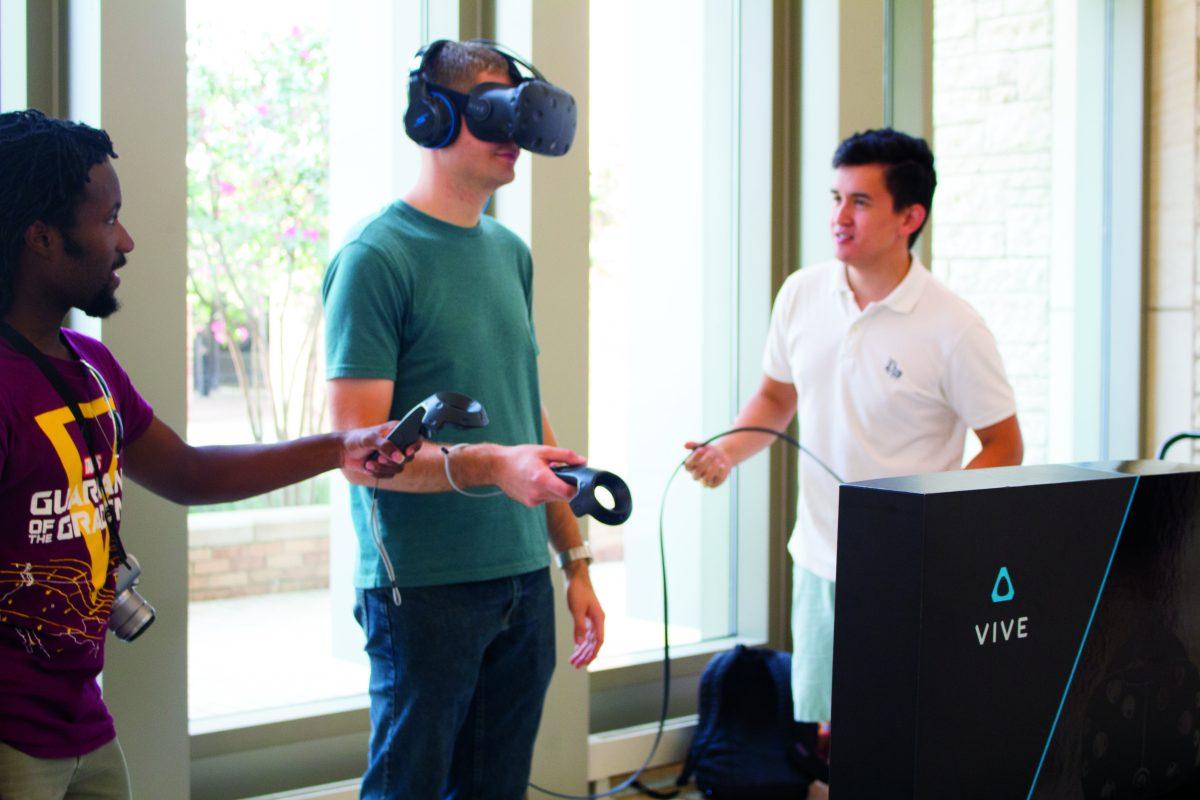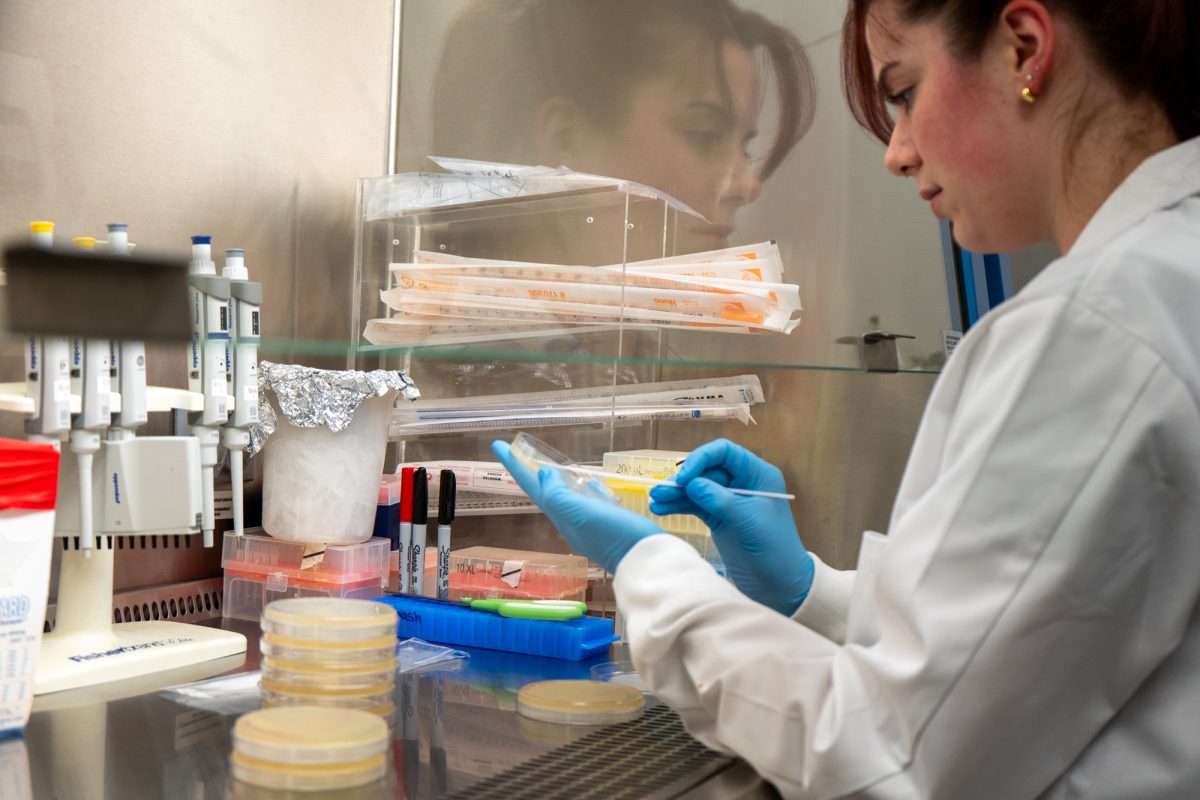Scuba diving, space pirate training and auto mechanic work took place in the MSC Sunday — all through a virtual reality simulation set up by the Texas A&M Visual and Augmented Reality (TAMUVR) organization.
Using equipment owned by aerospace engineering senior Neil McHenry, TAMUVR was able to create a completely computer-generated world for MSC passersby to experience.
“Virtual reality is a computer-generated simulated space that you are inside and your computer graphics are rendering what your space looks like completely, where augmented reality (AR), the computer is overlaying images on the world around you — like Pokemon Go is a real popular AR,” said Armani Cassel, meteorology senior and president of TAMUVR.
McHenry said the system used to achieve the demonstration is the HTC Vive, released in June 2016, which includes a head mounted display, two controllers and two laser lighthouses.
“The cost of [the system] is about $900 in total, after tax and shipping, just for the VR headset,” McHenry said. “To run it you have to have a computer, a relatively high end computer, that costs about $1,000 or more and that’s basically it for the HTC Vive.”
Engineering freshman Jared Kizer stopped by the demonstration because he had previously used Google Cardboard, a type of virtual reality experience that utilizes apps and rudimentary cardboard goggles, but said the HTC Vive was a whole new level.
“I did the one where it was space pirate training,” Kizer said. “There were drones flying at you and you had to shoot them or use a shield and block them [because] they were trying to shoot you.”
Kizer said it took him a few minutes to acclimate to the simulation.
“You can tell you’re basically wearing a screen, but after a couple of minutes, after moving around some, after looking around and being able to move controllers in your hands and watching the guns or shields turn with it almost identically to how it would be in real life, it becomes pretty convincing,” Kizer said.
While the system was set up for fun at the MSC, it also has practical uses.
“[VR has] applications in the professional arena with construction industries and overlaying, augmented simulations of future buildings as well as being able to train repairs for different machinery,” Cassel said. “It’s not just for fun, but that’s one of the biggest draws in terms of attention to it.”
McHenry said he is working on a project for NASA that will essentially be used to train astronauts by linking them together them in a simulation that will take them through an entire mission opposed to the separate systems typically used.
“The astronauts will be able to jump into virtual reality — not just one person either — we’ll be able to link multiple people into a simulation and have them, in virtual reality, try to fit maybe seven or eight astronauts into a space craft and [have] them run a mission all the way from Earth to Mars,” McHenry said.
Cassel said the purpose of the demonstration was to reach as many people as possible and to increase interest in virtual reality.
“Right now, it’s one more opportunity for students to try out virtual reality demos here and, again I come back to where we’re talking about how expensive an investment it is, we want to make sure that students can at least have an opportunity to try it and also, not just students but anyone who’s walking by, walking on campus,” Cassel said.
McHenry likened the increasing popularity of virtual reality to the late 1900s when computers and cell phones began their rise.
“This is just the start of the virtual reality surge,” McHenry said. “Kind of like in the eighties when we first started having computers and mobile devices in the 2000s, now we’re having a lot of virtual reality devices.”
From the MSC to outer space: virtual reality offers escape from real world
August 29, 2016
Photo by Photo by Leah Kappayil
Graduate student Neil McHenry and senior Armani Cassel demonstrate virtual reality to sophomore Patrick Tam in the MSC.
0
Donate to The Battalion
Your donation will support the student journalists of Texas A&M University - College Station. Your contribution will allow us to purchase equipment and cover our annual website hosting costs.
More to Discover








